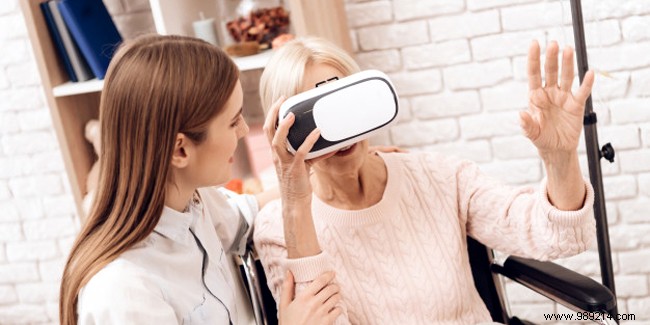
Just over 13 million people, or 20% of the population, are aged 65 or over in France. According to demographic projections, in 2050, 4 million seniors will be losing their autonomy compared to half as many today. Society must adapt to this aging and ensure that seniors live as long as possible independent of their homes and well integrated into social life. Gerontechnology is a discipline that works precisely, thanks to innovative techniques, to maintain as long as possible a life in good health and without loss of autonomy.
The term “gerontechnology” is a contraction of the words “gerontology” (the science of aging) and “technology”. It is in fact a term that brings together a set of technical systems and assistance solutions for the elderly and their caregivers intended to facilitate their daily lives.
Gerontechnology refers to a set of technologies, most often innovative, designed to improve the lives of seniors and those around them in many areas. It can indeed be applied, for example, to the fields of health, mobility, security, communication, housing, or even leisure.
Gerontechnology can even be considered almost as a science in its own right because it also mobilizes research in the design of new products and services that new technologies make it possible to consider in order to take into account the needs of the elderly.
Safety, comfort for seniors, ergonomics, are also an integral part of gerontechnology. In short, a discipline that participates more broadly in pushing back life expectancy and reducing the use of care as much as possible by inventing and creating technological environments at the service of people's health, housing, leisure, etc. elderly.
Gerontechnology therefore mobilizes a wide variety of professionals, from engineers to gerontologists, including ergonomists, nurses, psychologists, builders, manufacturers, etc.
Gerontechnology, which characterizes the provision of techniques, often state-of-the-art, at the service of the elderly, is above all intended to help them maintain their autonomy for as long as possible and to compensate for their deficient capacities so that they can carry out better all the acts of daily life.
Thanks to the various techniques used in gerontechnology, it is possible to respond better and better to the needs of the elderly, to make their environment more pleasant and easy to live with on a daily basis.
This discipline also has as its main objective to ensure that seniors, more and more numerous in our aging society, can live independently for as long as possible and that they continue, in the same way, to participate in social life despite the degradation of some of their faculties.
Gerontechnology is a real driver of progress in the quality of life of the elderly. Many connected objects in particular are already available to seniors to improve their daily lives.
This is the case, for example, of connected key fobs that allow elderly people whose cognitive functions are impaired to find their way back thanks to new technologies. There are also “intelligent” pill dispensers that automatically dispense medication at the times indicated by warning seniors with an audible or visual signal and thus avoid forgetting treatments or overdoses of medication.
In the field of communication, and in particular computing, gerontechnology has enabled the creation, for example, of touchscreen flat-screen computers that can be easily used by older people, even those with physical disabilities. They can easily browse the Internet, look at their scanned photos, listen to music, etc.
The adaptation of housing is also one of the areas where gerontechnology brings significant improvements for seniors. Those whose visual abilities are diminished can thus benefit from light paths in their homes which facilitate their movements and prevent falls in particular. Adapted remote monitoring devices are also major advances in securing the daily life of seniors at home.
Many other applications of gerontechnology should in the future help to further secure and improve the daily lives of older people. Soon, for example, to improve their movements, seniors will be able to make extensive use of "new generation" canes which, once in hand, make it possible to geolocate the person using it, to call for assistance using a button dedicated, or continuously measure blood pressure or pulse.
Soon, gerontechnology will also allow each senior to have lighting in their home totally adapted to their own sight, connected remote controls which manage all by themselves the opening and closing of shutters, doors, heating, electrical home, etc.